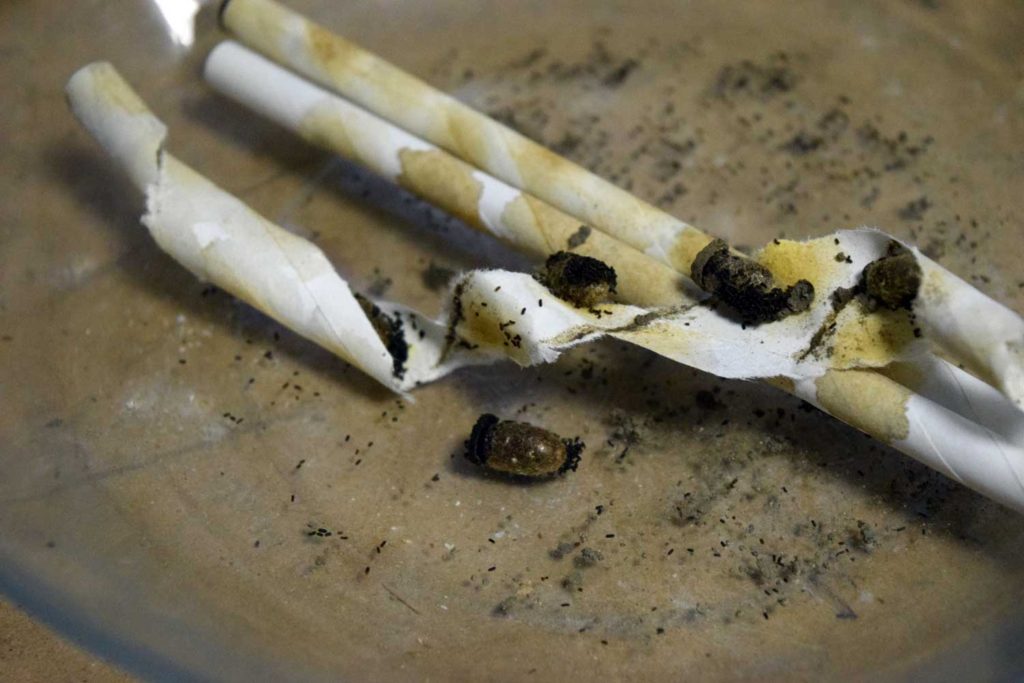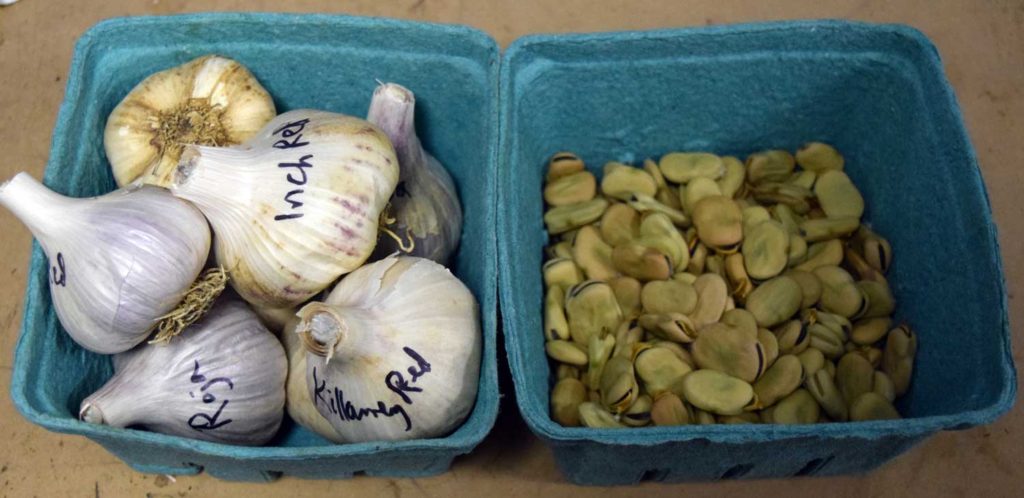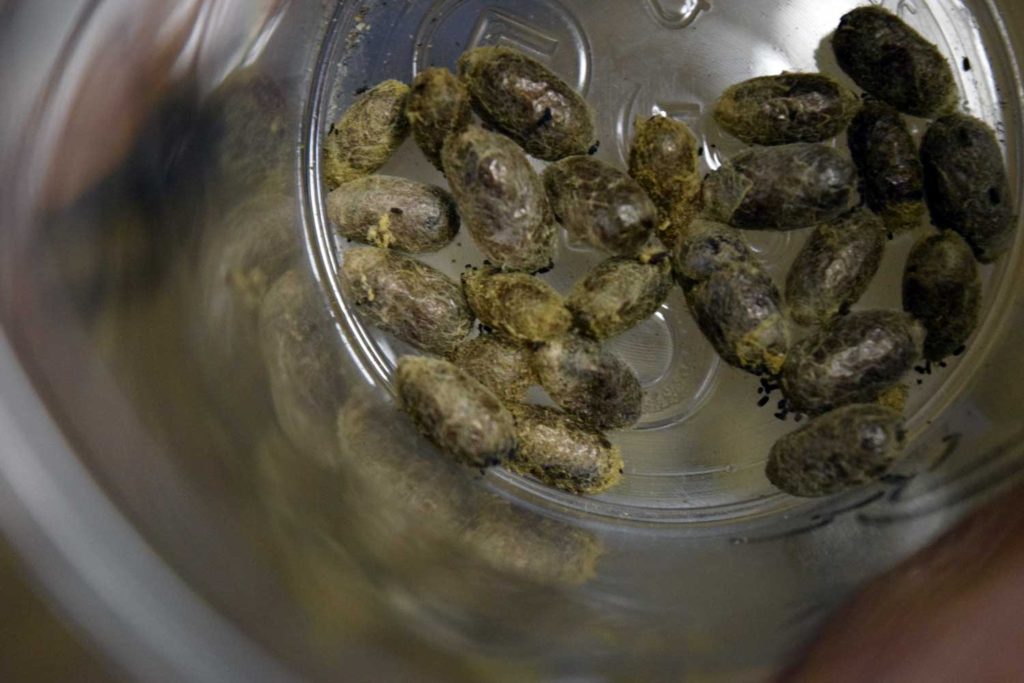Grab that sliver of sunlight between showers and get out into the garden. Fleece up and tidy the shed on a rainy day. Scratch out some thoughts on next year, with notes on this year’s successes and duds.
There are some November tasks for us Maritime Northwest gardeners. But this season is also a time to take it easy and practice “slow gardening.” Moving at slug speed on these chilly wet days seems most appropriate.
Granted a glorious Sunday afternoon last weekend, I rallied to rake out the last open space in my vegetable beds and plant garlic. Three varieties, six rows, 48 cloves. That should keep us in spicy sautés for most of next year.
The rest of the open space got filled up with favas. I had a box full of the thumbnail-sized beans saved from last spring’s harvest. They sat for six months waiting for this occasion, so I could no longer deny them their special purpose: Get under the soil and send up next year’s crop!
Favas are one of the few vegetables whose seed will sprout in our chilly November soil. Garlic, of course, needs a little chilling to trigger its emergence. I’ll see the fava shoots in a few weeks, but the garlic won’t poke through the straw mulch until January. It always warms my heart to see it during that coldest month, just as I am starting to notice the days lengthening beyond the solstice. Another season beginning.
A few more tasks that are getting some slow action on these short November days:
Sorting the bees. Yes, you read that right. I’ve had a box of Orchard Mason bees wrapped loosely in a mesh bag on my basement shelf since I brought them in in early fall. Now it is time for them to be transferred to the refrigerator for the winter.

The task is simple and rewarding. First, I open the stacked grid that holds the bee nesting tubes, paper sleeves in which they laid their eggs and mudded up the holes. I pull out the paper tubes and carefully peel them open to reveal the bees in their cocoons. (Since the eggs were laid in the spring, the eggs have hatched, the bee larvae have eaten the pollen deposits left with their eggs, and the larvae spun their little cocoons.)
Along with the bees in those tubes are a couple of interlopers that need to be removed. Spiders have laid their eggs in some of the tubes. No big deal, except I don’t really want those hatching on my basement shelves.
More concerning are the mites: hundreds of mites have glommed on to the bee cocoons. If left with the cocoons, they would attack the bees when they emerged, and decimate the population.
Fortunately, right now the mites and the bees are pretty dormant, so as I pull the cocoons away from the paper tubes, I brush off all the mites.
The clean cocoons are then counted and stored in a plastic bottle inside a plastic bag in my refrigerator. The bottle has some vents cut in the lid, and the plastic bag contains a damp paper towel that I’ll refresh from time to time. Refrigerators are low-humidity places, and my bee cocoons need a bit of moisture to survive.
Weeding the beds. Winter weeds grow more slowly, but so do your vegetable plants. And with less nutrition available in the soil, your winter vegetables don’t want the competition from weed roots. I clear a space at least a few inches around the base of each winter veggie. I also run the fork along the edges of the raised beds and pull out any grass that is encroaching. It seems to really spread if left to take hold over the winter.
Some of the less harmful, more beautiful weeds like viola tricolor (Johnny Jump-up) get left in the beds between the plants. They can be good filler to shield the bed from winter rains, and I can use the flowers to brighten up my winter salads.
Mulching the fall and overwintering veggies. After I weed, I try to tuck in some straw or other light mulch around the base of the plants.
This provides a number of benefits:
- keeps heavy rains from compacting the soil
- prevents wind from drying out any partially exposed roots
- prevents the soil from becoming too dry if we don’t get rain
- prevents weeds from sprouting.
And it looks nice!
Servicing the watering devices. I garden in a mostly mild winter climate, but sometimes we’ll get a hard freeze or a week of snow, so I need to protect against freeze damage.
First, I make sure my drip irrigation system is drained to avoid having the pipes burst. (Water is one of the few things that expands when it freezes.) I also check the downspouts and gutters to make sure there’s nothing clogging up the system that fills my water catchment. I clean and store my ceramic bird bath so it doesn’t crack. Finally, draining the hoses and storing them in the garage each winter will help them last many more years.
I appreciate the slower gardening days of winter. I can review some of these tasks as I peer through a rain-streaked window, looking to the western sky for that actionable opening of blue.


